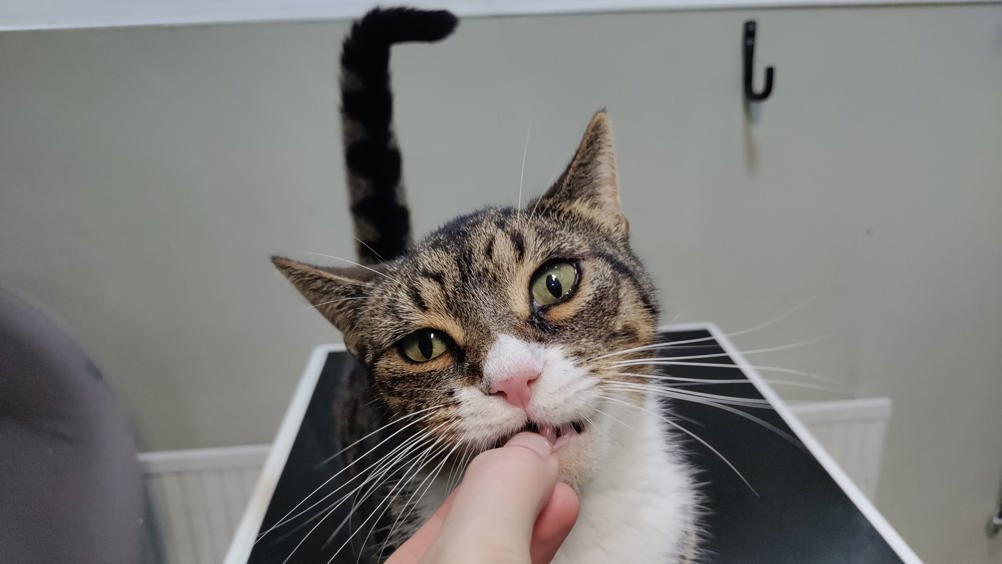References
Third eyelid laceration in a cat

Abstract
This case report discusses the management of a significant laceration on the third eyelid of a cat at an isolated island clinic location. The patient required immediate surgery to correct the laceration as well as medical management to prevent significant or prolonged periods with a superficial corneal ulceration. The patient healed quickly without further complications.
This case discusses the surgical and medical management of a significant laceration on the third eyelid of a cat at a rural isolated clinic location. The nictitating membrane (third eyelid) is a triangular shaped folding of the conjunctiva between the globe and the eyelids. It is a vascular-rich structure connected periorbitally at the medial angle by a fibrous fold. It is functionally essential for moistening the ocular surface by producing 30–40% of total tear production and distributing it across the corneal surface, while mechanically protecting the eyes and clearing debris (Demir and Altundağ, 2020).
Disorders of the third eyelid include foreign bodies, laceration, inflammation, eversion, protrusion or prolapse (Demir and Altundağ, 2020), although in first opinion practice the most common injury encountered in cats is conjunctivitis (Çatalkaya et al, 2023), and at referral centres it is corneal ulceration (Demir and Sensoy, 2023).
Register now to continue reading
Thank you for visiting The Veterinary Nurse and reading some of our peer-reviewed content for veterinary professionals. To continue reading this article, please register today.

